Last-Mile Delivery: The Definitive Guide
This is a complete guide to last-mile delivery. Learn: What is last-mile delivery? How it works? How to improve your last-mile operations? +more
Home > Blog > Building Brand Awareness with Last-Mile Delivery
Customer Experience ManagementLearn how to use last-mile delivery to build brand awareness, and create a delivery experience that generates brand value and recognition.
This is an all new guide about building brand awareness with last-mile delivery.
If you want to:
Get more consumers to recognize your brand.
Create a loyal following of customers.
Stay in the hearts and minds of people for longer.
Then you’ll enjoy the insights and actionable strategies outlined below.
Let’s get started.
“A brand for a company is like a reputation for a person. You earn reputation by trying to do hard things well.” – Jeff Bezos
Brand recall plays a major role in getting more customers to stick with your brand as well as to buy your brand repeatedly.
That’s why, in the first chapter we are going to explain everything you need to know about brand awareness.
Brand awareness is a marketing term. It defines the degree of consumer recognition of a product by its name.
For instance, when you’re ordering soft drinks at a restaurant, do you ask for a Coke or soda? Or maybe it’s Pepsi?
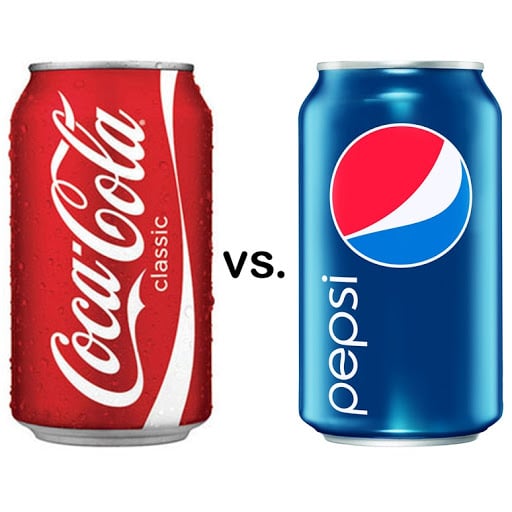
In this case, we’re talking about a product that became a proprietary eponym (or generic trademark).
That’s the peak of brand awareness.
Creating brand awareness is a fundamental step in promoting a new product or refreshing an older brand.
Ideally, awareness of the brand may include the qualities that differentiate the product from its competition.
Brand recognition is the degree to which a consumer can accurately identify your brand based on visual indicators such as colors or the logo.
For example, if you see Amazon’s black A and orange arrow underneath, before even making out the words, you’d automatically recognize it like Amazon.
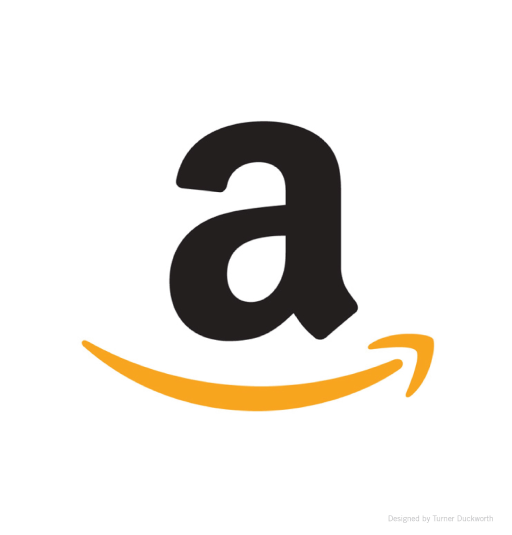
Source: Amazon.com
On the other hand, brand awareness takes brand recognition a step further.
It includes recalling not only the business name, but also the overall feeling of the business, information about its services and products, and other specific details about the brand.
Just having a brand isn’t enough.
It’s essential to consistently build a brand to establish its associations in the minds of your target audience.
Having increased brand awareness among consumers will directly translate into higher sales.
This higher rate of brand awareness for your business in a category can serve as an economic moat that stops competitors from gaining extra market share.
Having a well-established brand helps you approach your target audience.
It also makes your services and products much more relatable and human.
This is how brand awareness builds trust.
Also, advocating the values of your business with integrity and honesty which people will recognize will increase their level of loyalty.
In other words, brand awareness helps to build trust and put a face to a brand name that is easily recalled by consumers.
It helps your business increase the possibility of repeat shoppers.
Brand awareness should create an association.
It should associate actions and products with particular brands, subconsciously encouraging us to replace common words with branded terms.
One of the best brand awareness examples is Google.
When you have an important question, you Google it, right?

Source: Dawson Inc.
Google is a search engine. But we refer to the brand to explain the activity of searching for something online.
This is how brand awareness creates an association.
Brand equity describes brand value.
This is determined by consumer experiences with an overall perception of the brand.
Positive perception and experiences equal positive brand equity.
By building brand awareness and consistently promoting positive experiences with the brand you establish brand equity.
Brand awareness is the foundation of brand equity.
Once a consumer is aware of a brand, they start to recognize it without assistance and begin to prefer it over other similar brands.
And, this is how they establish loyalty.
You need to know who your customers are.
That means you need to define your target audience.
But not only that.
Technically, you have to understand how your customers think to know what they want.
This enables you to build a delivery that they need and will want to use.
So, without knowing who your customers are, you can’t offer good delivery.
If your customers spend more time ordering products than choosing them, you’re doing something wrong.
To win over customers through delivery, you have to make it easy for them to order goods from you.
For example, people value speed more than ever.
That means you’ll have to adopt faster fulfillment methods, like same-day delivery.
On the other hand, Gen Z consumers want to order products online.
This means that you’ll have to move your offer online and provide sales channels beyond the physical store.
But this also means that your last-mile delivery will have to support those channels.
You need to make sure that customers can easily choose how they want you to deliver their purchases at checkout.
If they want to choose the date of delivery, your website should allow them to select the delivery date.
If they want to choose the time of delivery, you need to provide at least an approximate time of day when their delivery will arrive.
And if you want your customer to be satisfied, it all has to happen in a couple of clicks.
But doing all of this also means that you have to have a system in place that can support it.
Because if you don’t make good on your promises, you can hurt your brand reputation.
Todays’ customers are demanding more than ever.
If you want to establish brand awareness through delivery, you have to give them what they want.
Your business should offer different delivery options in order to keep up with customers’ demands.
So it’s not enough to rely on standard delivery alone anymore.
You need to look into offering more affordable delivery options, such as free delivery.
But also faster fulfillment. No one is going to wait a week to get their package anymore.
Communicate with your customers, ask for feedback, and listen to what they have to say.
Staying in the loop with your customers’ desires and trends is a surefire way to mold a delivery that people will actually want to use.
Delivery experience is probably the most important thing when it comes to establishing brand awareness.
In fact, 90.4% of customers value price, speed, convenience, efficiency, and friendly service above all else.
So customers want to receive a quality service.
They also want to have more control over when, where, and how they receive goods.
And they want to be involved in the delivery.
So being transparent about your delivery is crucial.
Despite the rising pressure, you need to make sure to offer a pleasant experience at customer doors.
Return shipping is just as important for the delivery experience as the delivery itself.
In fact, 62% of shoppers are more likely to shop online if they can return the item that they’ve bought.
And that makes returns crucial for your brand awareness.
But handling return deliveries is an expensive hassle for many companies.
That’s why your last-mile delivery has to be able to support it.
How?
Through a solid reverse logistics strategy.
There is a clear link between reverse logistics and e-commerce returns.
That’s why it’s critical to build a reverse logistics network that doesn’t hinder your outbound fulfillment.
Yet, it has to be just as efficient as your forward logistics and robust enough to handle returns on demand.
After all, when return costs go down, profits go up.
Why?
Because of customer satisfaction.
Again, it’s all about giving customers what they want.
And having a strong reverse logistics system in place leads to an increased market share and improved retention.
All of which translates to more brand recognition.
Return customers are those who have bought your product or service once before and have returned to make another purchase.
The goal of any business is to turn first-time customers into returning customers.
You need to prioritize them so you can convert them into your repeat customers - the most dependable and loyal segment of a customer base.
Repeat customers can easily increase your brand awareness by spreading the word about you to their friends and family.
Celebrate your customers by rewarding their loyalty.
You can do this by offering free goods, delivery discounts, or creating special loyalty programs.
For example, Amazon offers free same-day shipping to people who sign up for the Prime program.
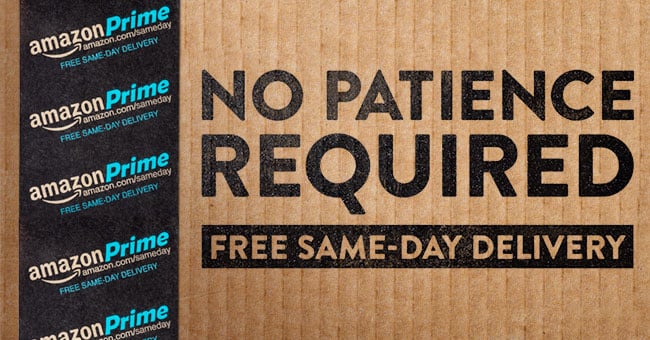
Source: Amazon.com
This is how you can demonstrate that you value customers.
And in doing so increase the value of your brand.
According to delivery statistics, people want to see at least three delivery options besides standard delivery at checkout.
So offering a few different choices is something you need to include in your business strategy.
One of the major trends in the B2B last-mile delivery is exploiting the delivery window.
In other words, when you deliver products to your customers.
Some of the most popular on-demand delivery options include:
If you can’t offer multiple delivery methods to your customers, you won’t be able to boost your brand awareness.
To stand out, you must be seen. And fast shipping will help you with that.
What’s the most recognized delivery service in the world?
If you exclude 3PLs like UPS, DHL, and FedEx, it’s Amazon.
That’s because 72% of Amazon deliveries are fulfilled within the first 24 hours following purchase.
But that comes at a cost.
And not even Amazon can keep up with the cost of Amazon fulfillment.
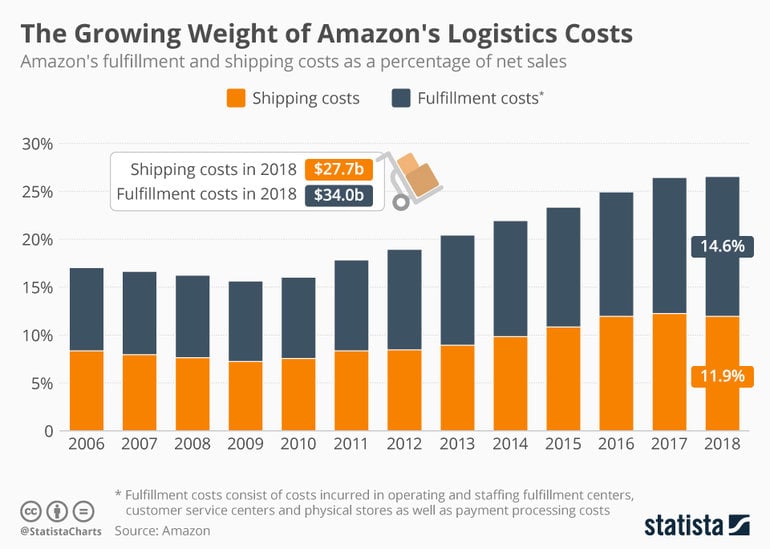
Source: Statista.com
But if you want to know how to compete with Amazon delivery, it’s all about co-existence.
So, if you can raise the speed of last-mile delivery, you make it convenient for shoppers to use your services.
And among all of the last-mile delivery trends, that one is the key to increasing your brand awareness.
Customers not only want their orders to arrive quickly but they also want them at affordable rates.
In fact, 93% of customers prefer free shipping to any other type of discount.
Customers are more likely to shop with your company if you’re offering free delivery.
Reducing the cost of your delivery can be challenging but it will definitely raise your brand awareness.
The last mile is a crucial part of the delivery process.
Consumer demand for exceptional delivery experience has never been higher than it is right now.
And improving your last-mile delivery operations will definitely raise brand awareness.
Here’s how:
There are two ways you can go about delivering products to customers:
You can hire a third-party logistics company.
Or you can build a delivery from the ground up.
The question of using an internal vs external delivery fleet is a difficult one.
But if you want to raise brand awareness, the best way is to build an in-house fleet.
Internal delivery fleets are those that are run and dispatched internally within a company.
Internal fleets have the advantage of being easily accessible and companies can deploy delivery tactics to grow operations or adjust strategies quickly to meet new consumer needs.
But most importantly, you have control over the quality of the delivery experience that your delivery agents provide.
Plus, your delivery fleet will be branded in the colors of your company. And bearing the logo of your brand.
And when your company is visible, it’s also recognizable.
To achieve last-mile e-commerce delivery success, brands must embrace automation.
That means using digital technologies to improve how you manage delivery logistics.
New solutions, like delivery management software, serve a dual purpose:
On the one hand, they make it easier to plan, manage, and operate your delivery.
On the other hand, they make last-mile delivery operations more efficient.
Here's eLogii as an example of last-mile automation:
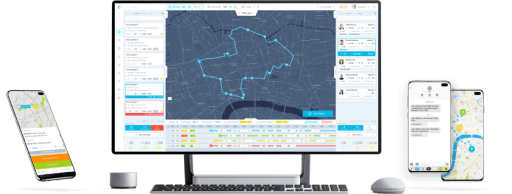
And that makes it easier for you to build a supply chain that can support the needs of your customers.
Plus, it lowers the cost of delivery (reducing operational expenditure).
This means you won’t have to transfer the costs to your customers.
That makes it more affordable for them to use your services.
And it gives you an advantage over your competitors.
Automation does another interesting thing:
It enables you to build an agile delivery operation.
An agile delivery touches every part of delivery operations.
Building an agile delivery means centering a strategy around the structure, process, people, and technology in your company.
One doesn’t work without the others.
But once you reach this goal, agile delivery allows you to adjust the entire operation to your actions.
And make decisions that will give you a great opportunity to boost your brand awareness.
Overcoming last-mile delivery challenges means improving your operations.
And the first step is understanding them.
The biggest challenges in how you manage your delivery aren’t only demanding in terms of quality.
They can have a profound impact on how you use your last-mile delivery service to address changing consumer habits and behaviors.
And once you raise the speed, timeliness, and accuracy of your delivery, you’ll be able to improve brand loyalty and customer satisfaction.
The transportation of goods to customers is by far the most expensive part of the last mile.
At the same time, it’s also where you waste a lot of resources.
One way to make your operations more cost-effective is to gain more control.
And you can do this if you do two things:
To do this, you’ll have to use technology.
(That’s another reason why it’s important to automate your last-mile delivery.)
Using route optimization software to plan deliveries makes your operations more organized.
You won’t have to rely on self-determined drivers to drop off orders.
Or their intuition and experience to find the customers’ location.
Instead, you’ll rely on concrete schedules and routes planned around things that matter to you: cost, time, and customer satisfaction.
And because you’ll use software, it’s much easier to optimize for performance than manually planning routes.
This is how your business can build trust with customers through delivery. And become a beacon of speed and reliability.
The only way to raise brand awareness is to continuously improve your last-mile delivery.
And to do that you’ll need to track, measure, and monitor key performance indicators (KPIs).
Calculating key metrics in delivery logistics, such as on-time delivery or cost per delivery, can help you to evaluate various areas of your service.
This in turn can help you uncover key opportunities for improvement.
But also find the places in the process where you waste the most resources.
This means that tracking KPIs can help you to find out the truth about your last-mile delivery.
And whether the strategies you deploy actually benefit your business. Or the efficiency of your operations.
Once you know all of this, and understand the strengths and weaknesses of your organization, you can take action.
You can increase the effectiveness of the supply chain network and its output efficiency.
As a result, continuously improving your last mile will lead you to continuously raise brand awareness.
The best way to raise brand awareness is to listen to your customers.
And one of the ways you can do that is to collect feedback.
If you think about brand recognition as a question, you need to find the answer.
And talking to your customers is like going straight to the source.
This can help you get into the mind of the consumer and find what customers value in last-mile delivery.
At the same time, it can provide you with valuable insight into what you can do to improve the quality of your customer service.
And by asking your customers to give feedback you make them a valuable part of your operation.
They’ll understand that their opinion matters.
If you adopt their suggestions, they’ll see that what they think is truly valued.
When you shape your delivery around your customers, instead of everything else, your customers will want to build a relationship with you.
And in a competitive market such as last-mile delivery, that’s worth more than any other point on this list.
We hope that you’ve enjoyed our guide to building brand awareness with delivery.
Now it’s your turn to use what you’ve learned to stand out from the crowd.
What are you going to try out first?
Are you going to shift your focus on delivering an exceptional experience?
Do you plan to stop outsourcing and build an in-house delivery fleet?
Or maybe you want to automate your last-mile delivery?
If that’s the case, we can help you with that.
This is a complete guide to last-mile delivery. Learn: What is last-mile delivery? How it works? How to improve your last-mile operations? +more
Here are seven must-read books about last-mile delivery that can help you find the answers about how to improve delivery management and logistics.
Local delivery is a great business opportunity. In this guide, you’ll see how to use local delivery to drive more sales from local customers.
Be the first to know when new articles are released. eLogii has a market-leading blog and resources centre designed specifically to help business across countless distribution and field-services sub sectors worldwide to succeed with actionable content and tips.
